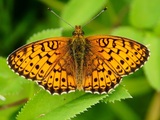
Русские, остановите эту войну! Спасите Свободную Украину!
Russians, stop this war! Save Free Ukraine!
Biodiversity Map
Taxa

Brenthis — subordinate taxa:
Taxon count: 2
-
Arthropodaphylum
Click to switch
to select orders
and filters > -
Hexapodasubphylum
Click to switch
to select orders
and filters > -
Insectaclass
Click to switch
to select orders
and filters > -
Lepidopteraorder
Click to set
as the main taxon
and as a base
← of the left panel > -
Papilionoideasuperfamily
Click to set
as the main taxon
and as a base
← of the left panel > -
Nymphalidaefamily
Click to set
as the main taxon
and as a base
← of the left panel > -
Heliconiinaesubfamily
Click to set
as the main taxon
and as a base
← of the left panel > -
Brenthisgenus
Click to set
as the main taxon
and as a base
← of the left panel >
PL
YES
name status: valid name
BioMap ID: 1203512
taxon code: 2117
taxonomy checked: YES
Data on distribution in Poland

Statistics
- Records: 1801
- Publications: 7
- Collections: 13
- Publication authors: 8
- Illustrations (iconography): lacking
- Photos (specimen/observation): 17
Taxon description
Rozpoznawanie i obserwowanie: Dymorfizm płciowy słabo zaznaczony. Wzór na wierzchu skrzydeł jest podobny do tego jak u innych, większych dostojek. Zewnętrzny brzeg przedniego skrzydła mocno wypukły. Zewnętrzna część spodu tylnego skrzydła niejednolita – z fioletowobrunatnym przyciemnieniem, w którym znajduje się rząd jasnych kropek w ciemnej obwódce.
Rozwój motyla: Samica składa jaja na spodzie liścia rośliny żywicielskiej. Zimuje młoda gąsienica. Wiosną żywi się młodymi liśćmi. Przepoczwarcza się na spodzie liścia lub na łodydze rośliny pokarmowej.
Okres lotu motyla: Jedno pokolenie w roku: 2/VI – 3/VII.
Siedliska: Przede wszystkim wilgotne łąki i obrzeża terenów bagiennych, czasami przytorza lub tereny ruderalne.
Rozwój motyla: Samica składa jaja na spodzie liścia rośliny żywicielskiej. Zimuje młoda gąsienica. Wiosną żywi się młodymi liśćmi. Przepoczwarcza się na spodzie liścia lub na łodydze rośliny pokarmowej.
Okres lotu motyla: Jedno pokolenie w roku: 2/VI – 3/VII.
Siedliska: Przede wszystkim wilgotne łąki i obrzeża terenów bagiennych, czasami przytorza lub tereny ruderalne.
Selected photos
... browse
 Brenthis
Brenthisino
 Brenthis
Brenthisino
 Brenthis
Brenthisino
 Brenthis
Brenthisino
 Brenthis
Brenthisino
 Brenthis
Brenthisino
 Brenthis
Brenthisino
 Brenthis
Brenthisino
External data sources
- Ostatnie rekordy
-
1034619
 ⊡
⊡ Nymphalidae: Brenthis ino, PL, Nizina Mazowiecka, mazowieckie, Warszawa, Warszawa, Wólka Węglowa, UTM DC99, 2018, leg. S. Pietrzyk
Nymphalidae: Brenthis ino, PL, Nizina Mazowiecka, mazowieckie, Warszawa, Warszawa, Wólka Węglowa, UTM DC99, 2018, leg. S. Pietrzyk -
1031765
 ⊡
⊡ Nymphalidae: Brenthis ino, PL, Pojezierze Mazurskie, warmińsko-mazurskie, Olsztyn, Olsztynek, Maróz, UTM DE52, 2015, leg. S. Pietrzyk
Nymphalidae: Brenthis ino, PL, Pojezierze Mazurskie, warmińsko-mazurskie, Olsztyn, Olsztynek, Maróz, UTM DE52, 2015, leg. S. Pietrzyk -
1031757
 ⊡
⊡ Nymphalidae: Brenthis ino, PL, Nizina Mazowiecka, mazowieckie, Warszawa, Warszawa, Wólka Węglowa, UTM DC99, 2017, leg. S. Pietrzyk
Nymphalidae: Brenthis ino, PL, Nizina Mazowiecka, mazowieckie, Warszawa, Warszawa, Wólka Węglowa, UTM DC99, 2017, leg. S. Pietrzyk -
1031756
 ⊡
⊡ Nymphalidae: Brenthis ino, PL, Pojezierze Mazurskie, warmińsko-mazurskie, Olsztyn, Olsztynek, Maróz, UTM DE52, 2016, leg. S. Pietrzyk
Nymphalidae: Brenthis ino, PL, Pojezierze Mazurskie, warmińsko-mazurskie, Olsztyn, Olsztynek, Maróz, UTM DE52, 2016, leg. S. Pietrzyk -
1031755
 ⊡
⊡ Nymphalidae: Brenthis ino, PL, Pojezierze Mazurskie, warmińsko-mazurskie, Olsztyn, Olsztynek, Maróz, UTM DE52, 2015, leg. S. Pietrzyk
Nymphalidae: Brenthis ino, PL, Pojezierze Mazurskie, warmińsko-mazurskie, Olsztyn, Olsztynek, Maróz, UTM DE52, 2015, leg. S. Pietrzyk -
1031754
 ⊡
⊡ Nymphalidae: Brenthis ino, PL, Pojezierze Mazurskie, warmińsko-mazurskie, Olsztyn, Olsztynek, Maróz, UTM DE52, 2014, leg. S. Pietrzyk
Nymphalidae: Brenthis ino, PL, Pojezierze Mazurskie, warmińsko-mazurskie, Olsztyn, Olsztynek, Maróz, UTM DE52, 2014, leg. S. Pietrzyk -
1028402
 ×
× Nymphalidae: Brenthis ino (Senn 2015)
Nymphalidae: Brenthis ino (Senn 2015) -
907813
 ×
× Nymphalidae: Brenthis ino, PL (Bąkowski et Mnich 2010)
Nymphalidae: Brenthis ino, PL (Bąkowski et Mnich 2010) -
896363
 ×
× Nymphalidae: Brenthis ino, PL (Blaik 1999)
Nymphalidae: Brenthis ino, PL (Blaik 1999) -
896117
 ×
× Nymphalidae: Brenthis ino, PL (Machnikowski 1999)
Nymphalidae: Brenthis ino, PL (Machnikowski 1999) - ... more
- Powiązane publikacje
-
Senn P. 2015. Motyle dzienne Gdyni. Atlas rozmieszczenia. Studio FM, Gdynia. 205 pp.
 Show records
Show records -
Bąkowski M., Mnich A. 2010. Motyle dzienne (Lepidoptera: Papilionoidea, Hesperioidea) Bytowa i okolic. Wiad. Entomol., 29(1):47-55.
 full text
full text Show records
Show records -
Machnikowski M.R. 1999. Zmiany w faunie motyli dziennych (Lepidoptera: Rhopalocera) w zachodniej części Bydgoszczy w latach 1975-1998. Wiad. Entomol., 18(2):103-109.
 full text
full text Show records
Show records -
Frąckiel K. 1999. Motyle dzienne (Lepidoptera: Papilionoidea, Hesperioidea) Biebrzańskiego Parku Narodowego. Wiad. Entomol., 18(2):85-98.
 full text
full text Show records
Show records -
Blaik T. 1999. Motyle dzienne (Lepidoptera: Papilionoidea, Hesperioidea) wybranych zbiorowisk roślinnych zachodniej części Równiny Opolskiej. Wiad. Entomol., 18(3):153-167.
 full text
full text Show records
Show records - ... more
- Powiązane zbiory
-
Akademia Pedagogiczna, Kraków
 Show records
Show records -
Muz. Górnośląskie, Bytom
 Show records
Show records -
Muz. Górnośląskie, Bytom: Raebel P.
 Show records
Show records -
Muz. Górnośląskie, Bytom: Skalski A.
 Show records
Show records -
Muz. Górnośląskie, Bytom: Skrabania S.
 Show records
Show records - ... more
- Wykaz powiązanych pozycji
-
The Distribution Atlas of Butterflies in Poland
 Show records
Show records





